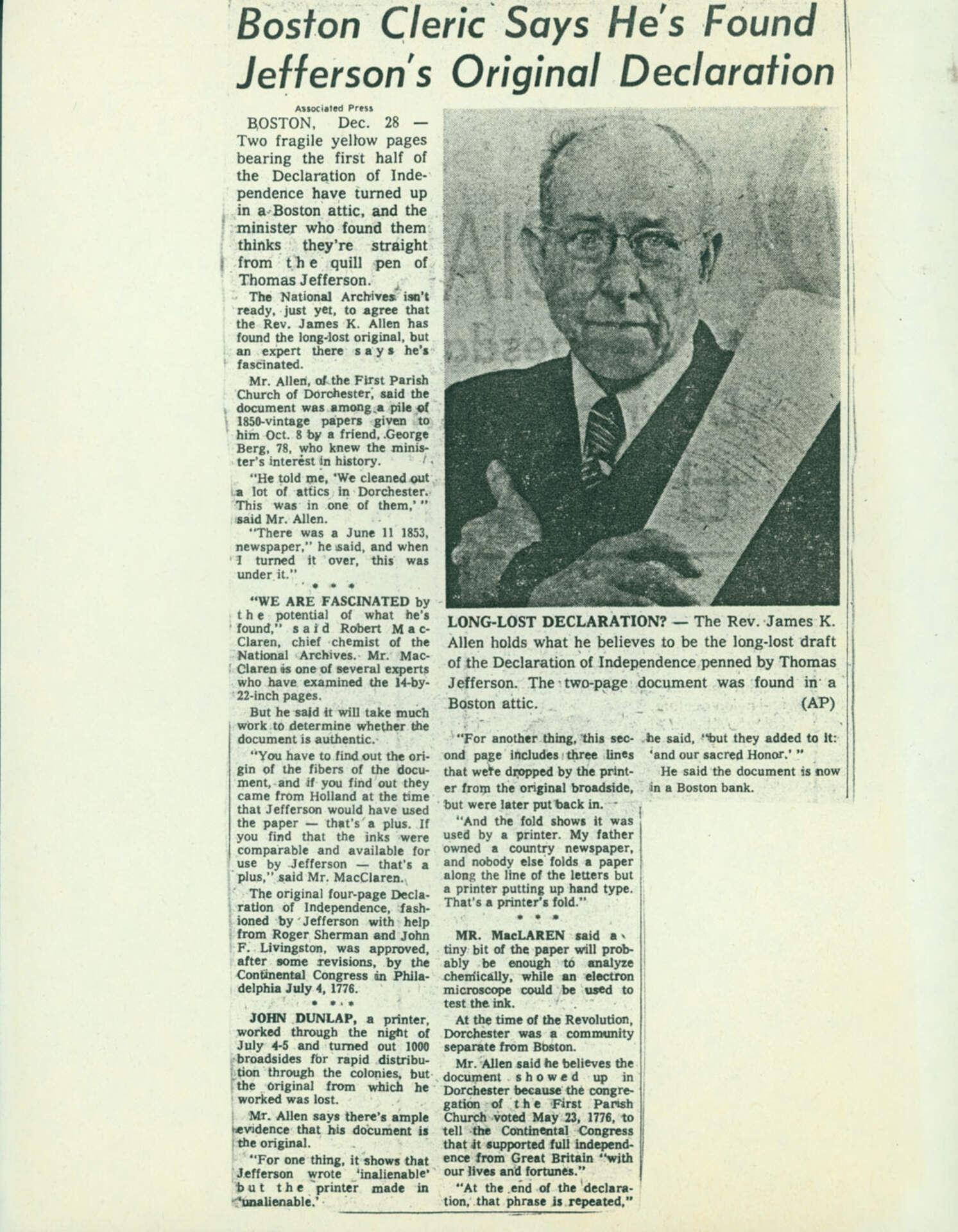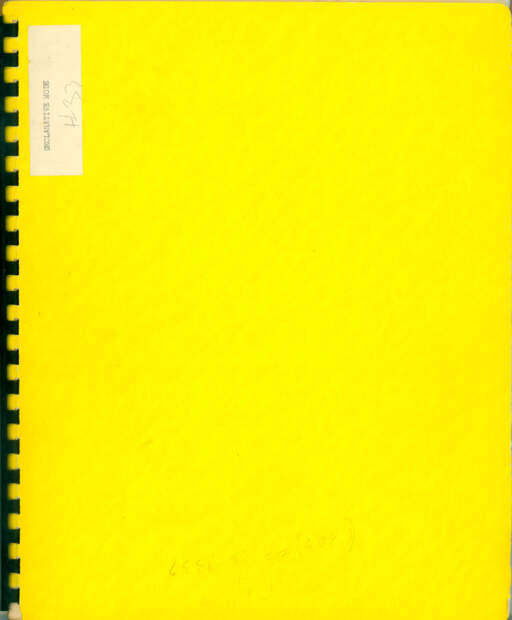Paul Sharits (1943-1993)Boston Cleric Says He's Found Jefferson's Original Declaration
Copied article on paper
11 x 8 1/2 inches
Gift of Christopher and Cheri Sharits, 2006
Boston Cleric Says He’s Found Jefferson’s Original Declaration
Associated Press
BOSTON, Dec. 28—Two fragile yellow pages bearing the first half of the Declaration of Independence have turned up in a Boston attic, and the minister who found them thinks they’re straight from the quill pen of Thomas Jefferson.
The National Archived isn’t ready, just yet, to agree that the Rev. James K. Allen has found the long-lost original, but an expert there says he’s fascinated.
Mr. Allen of the First Parish Church of Dorchester, said the document was among a pile of 1850-vintage papers given to him Oct. 8 by a friend, George Berg, 78, who knew the minister’s interest in history.
“He told me, ‘We cleaned out a lot of attics in Dorchester. This was in one of them,’ ” said Mr. Allen.
“There was a June 11 1853, newspaper,” he said and when I turned it over, this was under it.”
“WE ARE FASCINATED by the potential of what he’s found,” said Robert MacClaren, chief chemist of the National Archives. Mr. MacClaren is one of the several experts who have examined the 14-by-22-inch pages.
But he said it would take much work to determine whether the document is authentic.
“You have to find out the origin of the fibers of the document, and if you find out they came from Holland at the time that Jefferson would have used the paper—that’s a plus. If you find that the inks were comparable and available for use by Jefferson—that’s a plus,” said Mr. MacClaren.
The Original four-page Declaration of Independence, fashioned by Jefferson with help from Roger Sherman and John F. Livingston, was approved, after some revisions, by the Continental Congress in Philadelphia July 4, 1776.
JOHN DUNLAP, a printer, worked through the night of July 4-5 and turned out 1000 broadsides for rapid distribution through the colonies, but the original from which he worked was lost.
Mr. Allen says there’s ample evidence that his document is the original.
“For one thing, it shows that Jefferson wrote ‘inalienable’ but the printer made in ‘unalienable.’
“For another thing, this second page includes three lines that were dropped by the printer from the original broadside, but were later put back in.
“And the fold shows it was used by a printer. My father owned a country newspaper, and nobody else folds a paper along the line of the letters but a printer putting up hand type. That’s a printer’s fold.”
MR. MacLAREN said a tiny bit of the paper will probably be enough to analyze chemically, while and electron microscope could be used to test the ink.
At the time of the revolution, Dorchester was a community separate from Boston.
Mr. Allen said he believes the document showed up in Dorchester because the congregation of the First Parish Church voted May 23, 1776, to tell the Continental Congress that it supported full independence from Great Britain “with our lives and fortunes.”
“At the end of the declaration, that phrase is repeated,” he said, “but they added to it: ‘and our sacred Honor.’ “
He said the document is now in the Boston bank.


